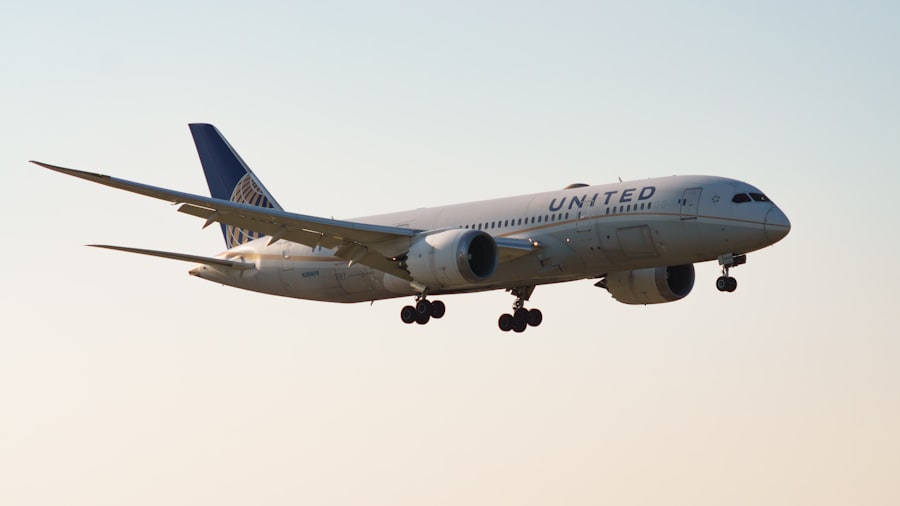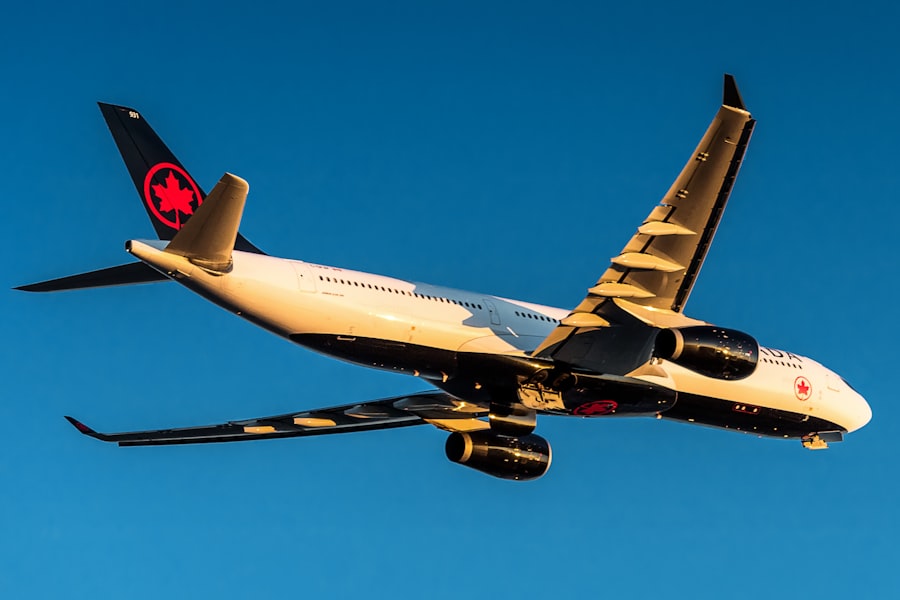The aerospace industry is a multifaceted sector that encompasses the design, development, and production of aircraft, spacecraft, satellites, and related systems and equipment. This industry plays a pivotal role in global transportation, defense, and exploration, serving as a backbone for both commercial and military operations. The aerospace sector is not only vital for connecting people and goods across vast distances but also for advancing scientific knowledge through space exploration.
With a rich history dating back to the early 20th century, the industry has evolved dramatically, driven by technological advancements and increasing demand for air travel. The aerospace industry is characterized by its complexity and the integration of various disciplines, including engineering, manufacturing, and regulatory compliance. Major players in this field include established giants like Boeing, Airbus, Lockheed Martin, and Northrop Grumman, alongside a growing number of startups focused on innovative solutions.
The industry’s economic impact is significant; it contributes trillions of dollars to the global economy and supports millions of jobs worldwide. As air travel continues to expand and space exploration gains momentum, the aerospace industry remains at the forefront of technological innovation and economic development.
Key Takeaways
- The aerospace industry encompasses a wide range of activities related to the design, development, and production of aircraft, spacecraft, and related systems and equipment.
- Current challenges in the aerospace business include increasing competition, rising costs, and the need for more efficient and sustainable technologies.
- Technological innovations and advancements in aerospace, such as the development of electric propulsion systems and advanced materials, are driving the industry forward.
- Sustainable practices in aerospace business, including the use of biofuels and the development of more fuel-efficient aircraft, are becoming increasingly important for the industry’s future.
- The future of commercial space travel is promising, with companies like SpaceX and Blue Origin leading the way in developing new technologies and making space more accessible.
Current Challenges in the Aerospace Business
Despite its robust growth trajectory, the aerospace industry faces a myriad of challenges that threaten its stability and future expansion. One of the most pressing issues is the impact of global events on supply chains. The COVID-19 pandemic exposed vulnerabilities in the aerospace supply chain, leading to production delays and financial losses.
As airlines grounded fleets and travel restrictions were imposed, manufacturers faced a sharp decline in demand for new aircraft. This disruption highlighted the need for more resilient supply chains that can withstand unforeseen global crises. Another significant challenge is the increasing regulatory scrutiny surrounding safety and environmental standards.
Governments worldwide are implementing stricter regulations to ensure that aircraft meet high safety standards while also addressing environmental concerns. The introduction of new technologies, such as electric propulsion systems and sustainable aviation fuels, requires extensive testing and certification processes that can be time-consuming and costly. Additionally, geopolitical tensions can lead to trade restrictions and tariffs that complicate international collaborations and supply chain logistics.
Technological Innovations and Advancements in Aerospace

Technological innovation is a cornerstone of the aerospace industry, driving improvements in efficiency, safety, and performance. One of the most notable advancements in recent years is the development of composite materials, which are lighter and stronger than traditional metals. These materials have revolutionized aircraft design by reducing weight and improving fuel efficiency.
For instance, the Boeing 787 Dreamliner utilizes composite materials extensively, resulting in a significant reduction in fuel consumption compared to older models. Moreover, advancements in avionics technology have transformed how aircraft operate. Modern aircraft are equipped with sophisticated navigation systems that enhance safety and efficiency.
The integration of artificial intelligence (AI) into flight operations is another groundbreaking development. AI can analyze vast amounts of data in real-time to optimize flight paths, predict maintenance needs, and improve overall operational efficiency. These innovations not only enhance the flying experience for passengers but also contribute to cost savings for airlines.
Sustainable Practices in Aerospace Business
| Metrics | Data |
|---|---|
| Carbon Emissions Reduction | 20% reduction in carbon emissions by 2030 |
| Renewable Energy Usage | Increasing renewable energy usage to 50% by 2025 |
| Waste Reduction | Implementing a zero-waste policy by 2030 |
| Water Conservation | Reducing water usage by 30% by 2025 |
As environmental concerns become increasingly urgent, the aerospace industry is actively pursuing sustainable practices to mitigate its ecological footprint. One of the primary areas of focus is the development of sustainable aviation fuels (SAFs). These biofuels are derived from renewable resources and can significantly reduce greenhouse gas emissions compared to traditional jet fuels.
Airlines like KLM and United Airlines have already begun incorporating SAFs into their operations, signaling a shift towards greener alternatives. In addition to fuel innovations, aerospace companies are exploring electric and hybrid propulsion systems as viable options for reducing emissions. Companies such as Airbus are investing in research to develop electric aircraft that could revolutionize short-haul travel.
The potential for electric vertical takeoff and landing (eVTOL) vehicles also presents exciting opportunities for urban air mobility solutions. By embracing these sustainable technologies, the aerospace industry aims to align itself with global climate goals while meeting the demands of environmentally conscious consumers.
The Future of Commercial Space Travel
The future of commercial space travel is poised for unprecedented growth as private companies enter the arena alongside traditional space agencies. Pioneers like SpaceX, Blue Origin, and Virgin Galactic are leading the charge in making space accessible to civilians. SpaceX’s Crew Dragon spacecraft has successfully transported astronauts to the International Space Station (ISS), while Blue Origin’s New Shepard has completed suborbital flights with paying customers.
These developments mark a significant shift from government-led space exploration to a more commercialized approach. The potential applications of commercial space travel extend beyond tourism; they include satellite deployment, space research, and even asteroid mining. As technology advances and costs decrease, we may see an increase in commercial ventures that capitalize on the unique environment of space.
The establishment of space hotels or lunar bases could become a reality within the next few decades, fundamentally altering our understanding of travel and exploration.
Global Partnerships and Collaborations in Aerospace

Collaboration is essential in the aerospace industry due to its complexity and the need for diverse expertise. Global partnerships between countries and companies have become increasingly common as organizations seek to leverage each other’s strengths. For example, the Airbus A350 program involved collaboration between multiple countries, with components manufactured in various locations worldwide.
This collaborative approach not only enhances innovation but also fosters international relationships. Moreover, partnerships between private companies and government agencies are becoming more prevalent. NASA’s collaborations with SpaceX for crewed missions to the ISS exemplify how public-private partnerships can accelerate technological advancements while sharing costs and risks.
Such collaborations are crucial for addressing challenges like climate change and advancing space exploration initiatives.
Career Opportunities in the Aerospace Industry
The aerospace industry offers a wide array of career opportunities across various disciplines, making it an attractive field for job seekers with diverse skill sets. Engineering roles are among the most sought after, with positions available in aerodynamics, structural design, propulsion systems, and avionics. Engineers play a critical role in developing new technologies that enhance aircraft performance and safety.
In addition to engineering positions, there are numerous opportunities in project management, manufacturing, quality assurance, and research and development. As companies increasingly focus on sustainability, roles related to environmental compliance and sustainable practices are also on the rise. Furthermore, with the advent of commercial space travel, new career paths are emerging in areas such as space tourism management and orbital logistics.
The Path Forward for Aerospace Business
The aerospace industry stands at a crossroads as it navigates challenges while embracing opportunities for growth and innovation. The integration of advanced technologies, commitment to sustainability, and expansion into commercial space travel are shaping its future landscape. As global partnerships strengthen and new career opportunities arise, the industry is poised to adapt to changing demands while continuing to push the boundaries of what is possible in air and space travel.
In this dynamic environment, stakeholders must remain agile and forward-thinking to address emerging challenges effectively. By fostering collaboration across sectors and investing in research and development, the aerospace industry can ensure its continued relevance in an ever-evolving world. The path forward will require a concerted effort from all players involved—governments, corporations, researchers, and educators—to create a sustainable future that benefits society as a whole while advancing human exploration beyond our planet.


